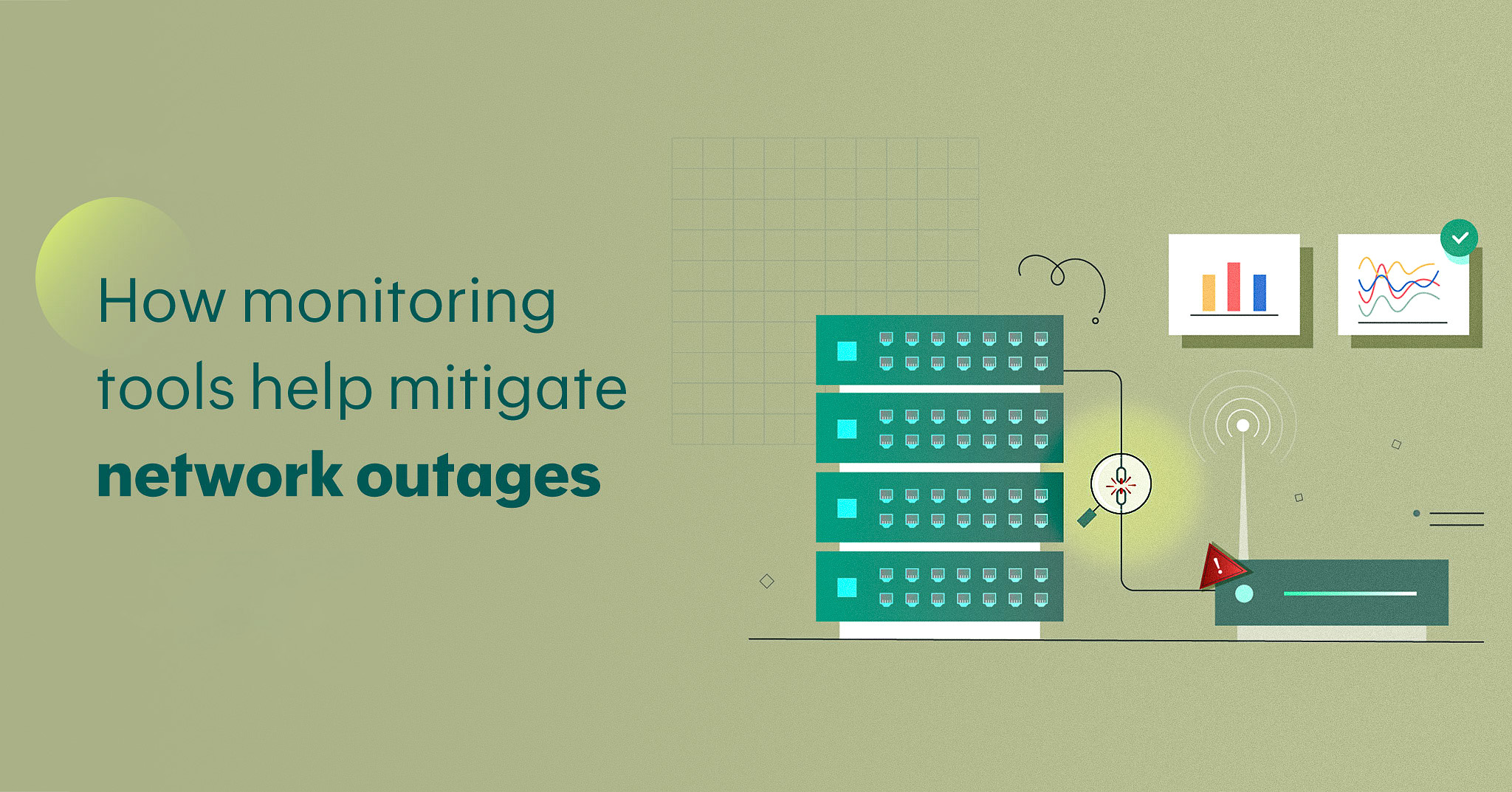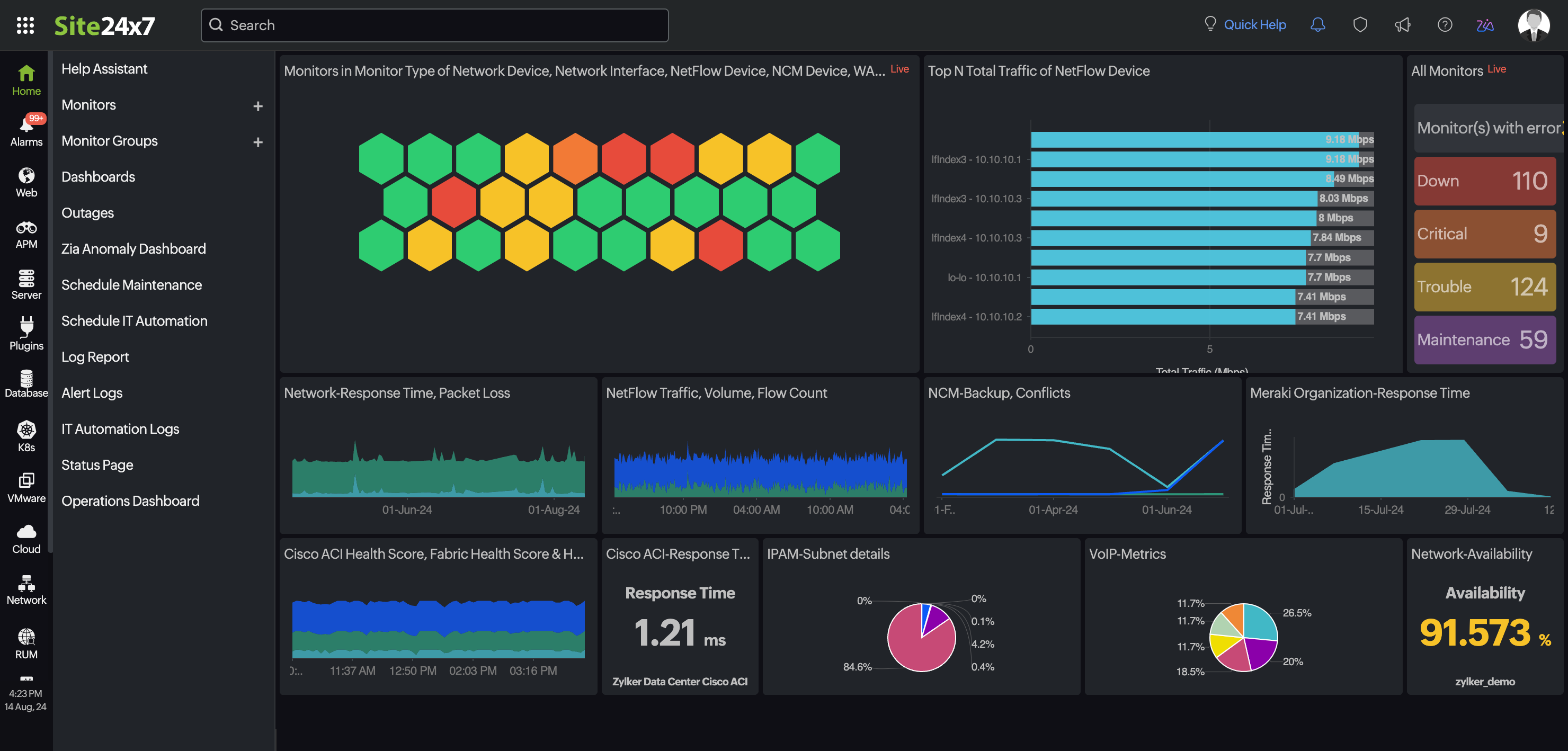The unknown threats: Understanding network outages and preventing them

According to a recent study by the Uptime Institute, the most frequent cause of network outages stems from issues in configuration or change management processes (https://datacenter.uptimeinstitute.com/rs/711-RIA-145/images/AnnualOutageAnalysis2023.03092023.pdf). This is closely followed by failures attributed to third-party network providers.
In the context of our digitally connected world, experiencing a network outage can severely disrupt business operations. The sudden loss of communication and connectivity isn't merely an inconvenience; it can evolve into significant financial and reputational damage for companies. It's vital for businesses to grasp the reasons behind network outages and the potential impacts. By doing so, they can take the necessary steps to minimize risks and ensure that they have effective plans in place to prevent future disruptions.
What is a network outage?
A network outage is essentially an unexpected disruption in an organization's network infrastructure, where service, connectivity, or functionality is lost. This problem can range from a slight hiccup that affects a small area of the network to a major issue that causes significant downtime that freezes core operations and can bring business processes to a standstill. When a network goes down, it's not just about losing an internet connection; it can prevent employees from getting the crucial information they need, interrupt communications, and halt customer transactions. This not only leads to a drop in productivity but can also erode customer trust. In our interconnected world, understanding network outages is essential for anyone keen on keeping their business running smoothly and maintaining healthy client relationships.
Causes of network outages
Imagine you're in the middle of a crucial online meeting, and suddenly, your screen freezes. This might be the result of a network outage, a common yet frustrating experience that can stem from various sources, both inside and outside the organization's control. Some of the common causes include:
- Configuration management failure: An organization experiences a network outage due to incorrect configuration changes causing critical traffic blockages.
Solution: Utilize network configuration management tools to track configuration changes in real time, set up alerts for suspicious behavior, and automatically roll back configurations in case of anomalies to prevent outages caused by configuration errors. - Third-party network provider failure: A third-party provider outage disrupts connectivity for multiple businesses.
Solution: Track end device status continuously using network monitoring tools and receive alerts to address issues and ensure uninterrupted network services promptly. - Hardware failure: A core router malfunction results in network interruptions.
Solution: Monitor hardware health metrics, generate alerts for potential failures, set up automated tests to ensure hardware functionality, and utilize predictive maintenance schedules based on monitored data to prevent downtime from hardware failures. - Firmware error: A software bug in network equipment leads to network instability.
Solution: Monitor firmware vulnerabilities, check for patch updates, and use anomaly detection alerts to identify and address issues before they cause network outages. - Line breakages: Construction work damages an underground network cable, cutting off connectivity.
Solution: Monitor physical network infrastructure health, set up alarms for network cable disruptions, and use network mapping features to pinpoint cable locations quickly. - Weather-related incident: Severe weather causes network outages.
Solution: Employ redundant networks to improve network resilience, and communicate real-time notifications to proactively manage network outages during adverse weather events. - Corrupted firewall or routing tables' issues: Unauthorized changes corrupt network configurations, causing congestion or inaccessibility.
Solution: Monitor firewall or routing configurations continuously, set up change tracking alerts, conduct regular network configuration compliance audits through monitoring systems, and leverage automated configuration backups for quick recovery from corruption issues to minimize network disruption. - Network congestion cyberattack: A DDoS attack overwhelms network resources leading to service disruptions.
Solution: Set up traffic anomaly alerts, use traffic monitoring to detect attack patterns, and ensure network resilience against cyberattacks.
Mitigating the risk of network outages
Understanding the common causes of network outages is the first step toward prevention. Businesses can mitigate the risk through proactive monitoring, regular maintenance, robust security protocols, and contingency plans such as redundant systems or backup power supplies. Employee training and awareness about the risks and preventive measures are also crucial in minimizing human error-related outages.
Contrary to the common belief that preventing network outages requires an arsenal of tools, there's a more efficient approach. Site24x7 is a robust solution capable of monitoring these issues and delivering comprehensive observability without the complexity of managing multiple tools.
Network outages are a formidable challenge for any organization. By understanding the potential causes and implementing strategic measures to combat these disruptions, businesses can safeguard their operations, maintain customer trust, and ensure the continuity of their services.

Comments (0)